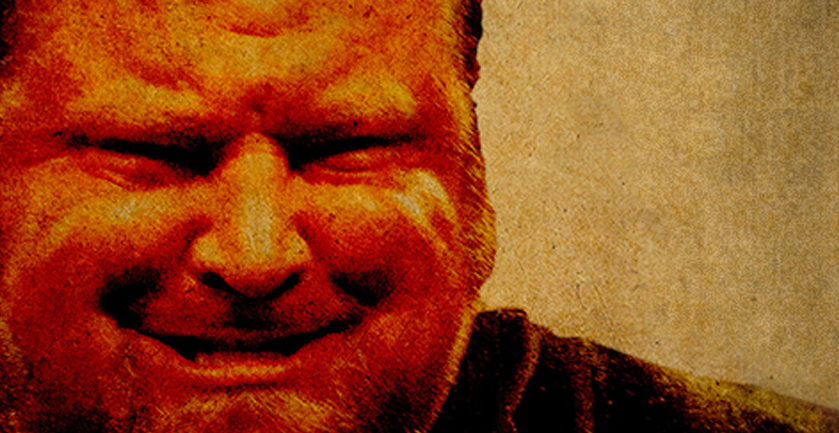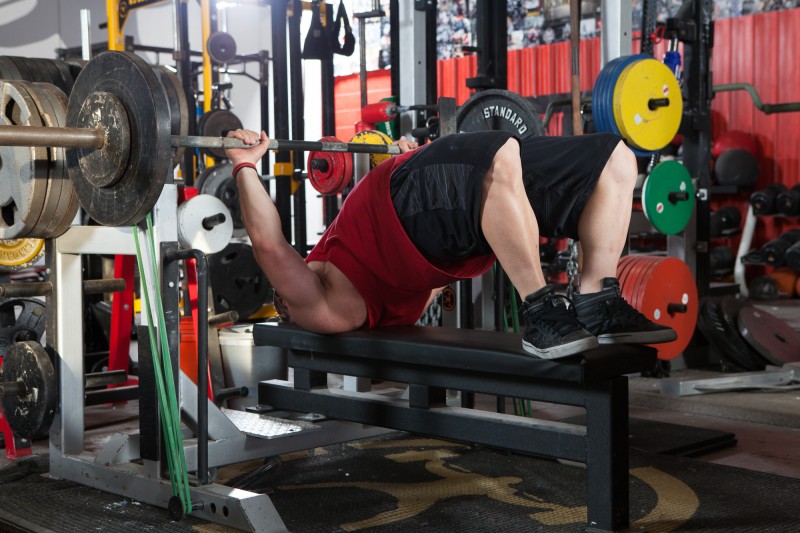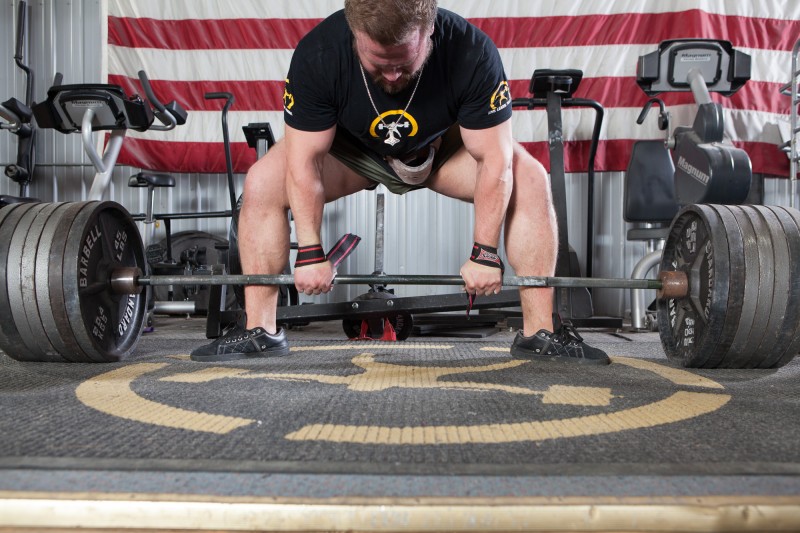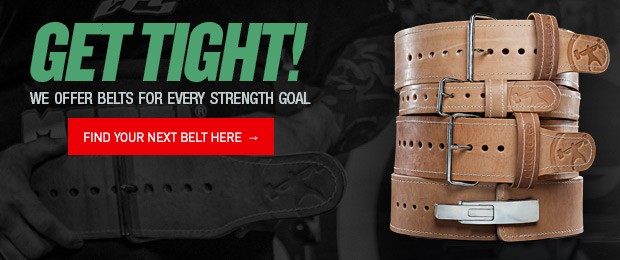
I have talked a lot about using your lats in all three of the main lifts, but sometimes it just feels like many lifters do not actually know how to utilize them. Even more, I have found that many lifters think they are using their lats, but when I see them in person I find they are not. It can be a bit of a tricky thing to learn and I am honestly not too sure how to get it across in written word. But I am going to give it a try. For the people that are not using their lats correctly but still work them, they will find a nice bump in their lifts when they do start actually using them to their potential.
I have heard many different ways and descriptions of how to use your lats in the main lifts. In fact, I have actually thought of it differently throughout my own lifting career. How a coach describes or says what he wants a lifter to do is very important. I don’t really know why, but I find most lifters respond differently to different commands. In my eyes, it is the coach’s job to be able to find the best ways to get the lifters to understand. I know I am the same way, because I can hear things multiple times or in different ways but sometimes I still just don’t get it. Then someone says it just a bit different and, bam, it just clicks in my brain.
This is why, over the years, I have thought of how to use my lats in different ways. For example, when I wore a bench shirt I always thought of bending the bar, which helped me tuck my elbows hard and got me to flex my lats. Once I started benching more raw again, that just didn’t work in my head, because I did not tuck my elbows as hard anymore. I was just trying to flex my lats — and I thought I was, until a trip up to see Chris Duffin, when he basically grabbed hold of my lats when I was benching. It made me realize I was not flexing them as hard as I should have been. We are never too old to learn new stuff or too good to not listen to others that know what they are talking about. As much as I hate to admit it, we are all human — even me.

Using Your Lats in the Squat
The posterior chain is just so important in strength and sports in general. The lats are a key muscle group in the posterior change and are huge in all aspects of back strength. This is so true when it comes to squatting. I admit that I have changed my squat technique some over the years. The biggest change most recently has been switching from an arched low back to a neutral back position. This did not change my upper back position but it did make me look at how I thought about my lats in the movement.
I see the lats helping in two ways. The first and maybe lesser effect of the two is helping keep the upper back from rolling or rounding. I feel this is more the job of the other upper back muscles like the rhomboids and traps, but the lats do a lot to help with this too. The second and more effective role of the lats is the ability to pull the back down and compress it to hold the whole back in position. The base structure of the back is simply vertebra and the disk between them, then lots of ligaments, tendons, and muscles. It is setup this way because it needs a huge range of motion, but when squatting we do not want that huge range of motion. We especially don’t want our backs hunching over. Flexing the lats to pull the back down and compress it will help keep it more rigid and locked into position. It is like having a bunch of metal rings with super balls between them: If you push it then it will easily sway and move. If you take a band or strap and hook it from the top to the bottom then tighten it up, the whole thing becomes more rigid.
So when I am squatting and I just get under the bar, I always think about pulling my shoulder blades together and my shoulders back. Then as I am finding my groove for the bar, I drive the bar into position. This is the point where I think about my lats. I put pressure against the bar, and as I am doing this I think about doing a lat pulldown. So I am driving into the bar, pulling my lats down, and thinking about compressing my back as much as possible. I do not think to do this by pulling the bar down, per se, like a lat pulldown. I am just thinking about pulling my shoulders down by flexing my lats. At this point, you do not relax or let up on that squeeze of the upper back or lats until the lift is complete. If you’re doing this correctly you should not feel your back compress when you pick up the weight, because your lats will have already compressed your back.
Another note is to always squeeze the shoulder blades together and back before pulling the lats down. Doing it in the opposite order just makes it hard to get the upper back in the correct position, because once the lats are pulled down, even the upper back will not want to move from that position. This is not the easiest to just do or get comfortable with. It will take some practice and time to get used to, but when you do, it makes an enormous difference. It is also something you can start practicing with your first warm-up even with an empty bar. It can help to have someone behind the lifter actually grab the lats when they are setting up. It gives feedback to the lifter if the lats are actually being flexed or not — and if so, how hard. Another thing to remember is that you're pulling your upper back into your lower back. You're not pulling down toward the ground. So when you bend in the squat, do not make the mistake of trying to pull your back down toward the ground. You are just compressing the back.

Using Your Lats in the Bench
It is almost the same concept in the bench press, with just some slight changes. Bench setups can vary a lot, especially for me as a legs-out bencher. I actually start low on the bench and drive myself up into my arched position instead of setting the feet and moving the upper body down into the arch like most tucked benchers. Still, how you use the lats is the same. I have played around with pulling the lats down first and with squeezing my shoulder blades together first. I actually do both, depending on how I feel. When I squeeze my shoulders first then pull my lats down I seem to get a bit tighter upper back, but can’t seem to get my shoulders as low. When I squeeze my lats down first, I do not seem to get my shoulders quite as tight together. So some days my shoulders are sorer and other days my upper back might be tired. It is a minor thing but I still use it to my advantage.
Again, when you're flexing your lats, you're pulling your shoulders down and compressing the back. Once the lats and upper back are flexed, they stay that way until the lift is done. This will help keep the arched position and will help at the bottom of the press, along with adding a ton of stability. Again, it can help to have someone grab your lats for feedback, especially when you’re first learning to do this. Your back should be exhausted after a bench session, especially if this is new to you.
Using Your Lats in the Deadlift
For many years I did not really think much about the lats in my deadlift. That was a huge mistake. It was not until I started using a more neutral low back that I realized how big of a mistake it actually was. Just like the other two lifts, it is about compressing the back and pulling the shoulders down. I have adopted a bit of a rolled-forward thoracic spine technique in the deadlift. I do not have a great build for deadlifting, so I am always looking for every advantage I can get. The thoracic spine is made to bend forward, so I now start in that position. So my first thing is to set my neutral back and then roll my thoracic forward but keep my shoulders neutral. At this point I pull my shoulders down with my lats and flex them as hard as I can. Having my shoulders down puts me in a better position for my pull, and having the lats flexed helps keep the position of my back. If you’re doing this correctly, it should be similar to picking up the squat bar with weight and not feeling you back compress because it is already compressed with the lats. Once the slack is pulled out of the bar, you should not feel compression of the back or the shoulders lowering. With all the changes I am making in my life, I am currently not doing much if any, single-rep max work, but I still pull somewhat heavy for more reps. Doing this has helped my deadlift a ton and it has never felt better. I think it is the best position and most efficient my deadlift has ever been. Plus, I just keep getting stronger and stronger with it.
MORE: Bodybuilding Exercises for Powerlifters — Widen Your Grip to Beef Up Your Back and Deadlift
These may not seem like very big changes to work on or that they would make that much difference, but it really is huge once you master it. Mastering it may take some work, so don’t give up right away if you do not see a huge change immediately. It takes some good muscle control and building up of strong neuropathways. Don’t forget that every time you do the movement, even with an empty bar, it is a chance to build those pathways and make it a habit. As it becomes more of a habit, you will really see the potential. All the little things that add up to huge lifts, so get those lats pulling their weight.












I've developed some upper back/lat pain recently during low bar squats and have been dealing with another issue where the bar is also somewhat uneven on the back. I make sure to squeeze shoulders (blades) together hard, both back and down to get extension in the thoracic and have actively tried to bend the bar to engage the Lats. Do you think Im maybe not flexing the lats hard enough to tighten the back and that this could be contributing to the issues I've been having?
Thanks!